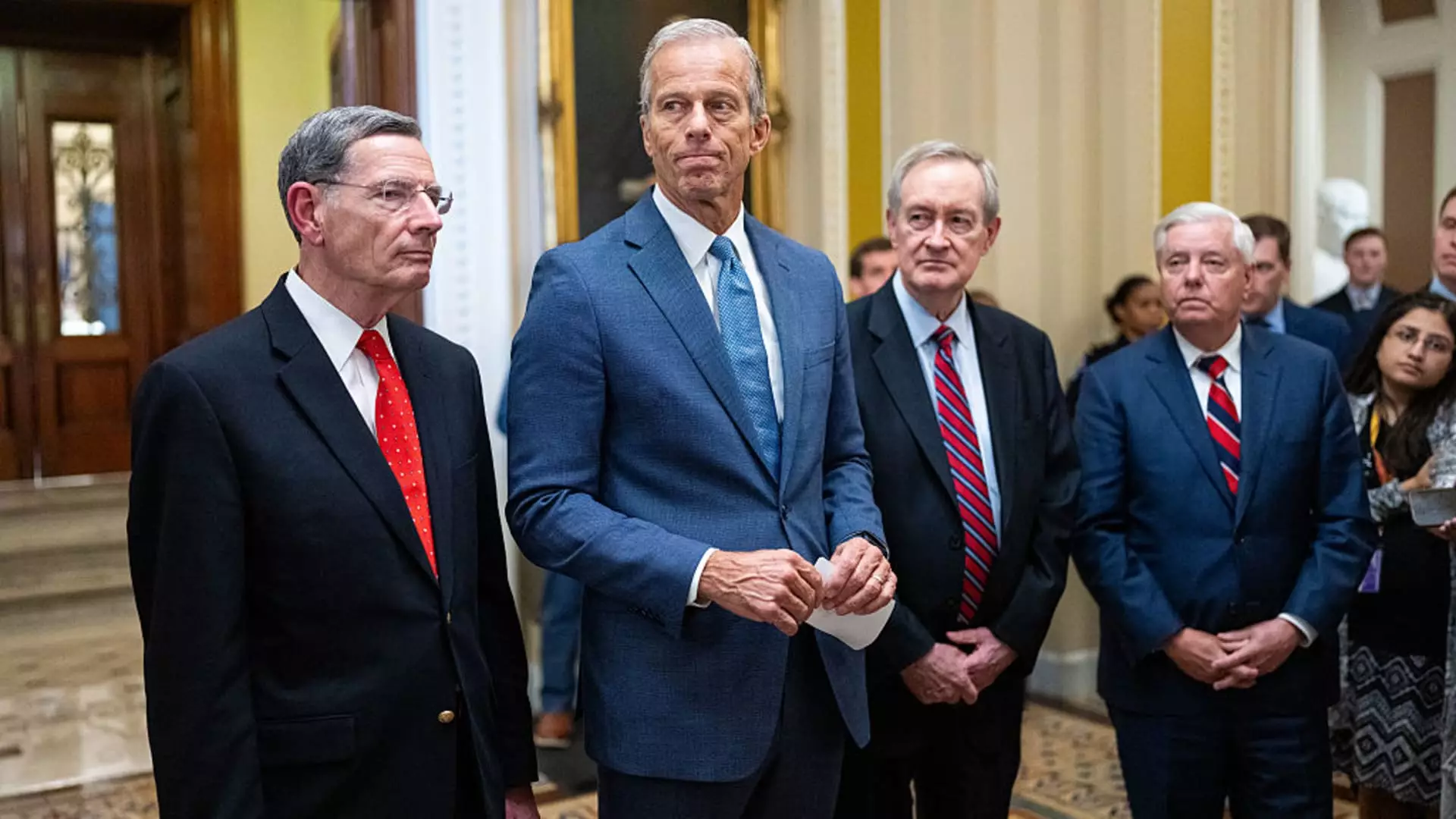At first glance, the recent legislative push by Senate Republicans appears to offer tangible relief to various household segments through an array of tax deductions. The bill champions deductions for auto loan interest, tips, overtime earnings, and senior citizen benefits, ostensibly targeting those who have traditionally been left behind in the tax code’s labyrinth. Yet, beneath this superficial veneer of fairness lies a troubling truth: these deductions primarily benefit higher-income households, perpetuating an unequal economic landscape disguised as middle-class support. The narrative that these measures bolster everyday Americans collapses under scrutiny, revealing instead a policy skewed toward bolstering wealthier demographics with minimal benefit for low-income workers.
The core issue with these types of deductions, especially when presented as universally advantageous, is their inherent bias toward the wealthy. Tax deductions—by lowering taxable income—are most advantageous for those already in higher tax brackets. For lower-income workers, who often lean heavily on the standard deduction and do not generate significant taxable income, these new possibilities for deduction are effectively inaccessible. The policy’s design unintentionally (or perhaps deliberately) excludes the vulnerable, camouflaging its regressive tendencies with language of support and fairness.
The Myth of Targeted Benefits
Proponents argue that “above-the-line” deductions are crafted to assist all earners regardless of whether they itemize, fostering a perception of inclusivity. However, the reality is quite different. The thresholds for benefiting from these deductions — such as the income restrictions for overtime or senior-related deductions — are set at levels that exclude the very low earners who need help the most. For instance, to leverage the auto loan interest deduction, a household would need a car loan exceeding $112,000—a figure almost impossible for most first-time buyers or those in modest income brackets.
Additionally, many of the deductions require a household to already have considerable taxable income, a criterion that excludes the working poor who often have incomes below the standard deduction threshold. These limitations fundamentally undermine the supposed intent of the bill to support everyday Americans, revealing a systemic bias that favors the upper-middle class and wealthy.
The supposed targeting of middle- and upper-income households is further exacerbated by the restrictions on income eligibility for these deductions. For example, the senior deduction begins to phase out once an individual exceeds $75,000 in income, thereby marginalizing truly low-income seniors who rely more on Social Security and have less flexibility in tax planning. This reinforces the misconception that the bill is about fairness when, in reality, it codifies existing disparities.
Tax Credits: The More Effective Tool—But Not Without Flaws
While deductions tend to favor higher earners, tax credits—particularly refundable ones—hold more promise for the lower-income population. Credits directly reduce tax liabilities dollar-for-dollar, making them inherently more equitable. Yet, the legislature’s approach often leaves millions of children and low-income families on the sidelines. The increased child tax credit, for example, is a positive development but is still limited by income thresholds and the non-refundable component, which restricts families from fully realizing its benefits.
This perpetuates a significant gap: billions of dollars allocated to the system are not reaching the families who need it most. It’s akin to pouring water into a leaky bucket—no matter how generous the size, it doesn’t make a meaningful difference if those who need it most are excluded from full participation. Instead of rethinking these credits entirely, the focus remains on incremental adjustments, which serve more as window dressing than transformative policy.
What this reveals is a broader failure of our tax system: the illusion of fairness that is deft at concealing entrenched inequalities. The system claims to support the middle class but, in reality, it favors those with the financial means to exploit complex deductions and tax planning strategies, leaving low-income Americans behind. As long as tax policy continues to disproportionately benefit the wealthy, any claims of fairness ring hollow.
The Real Cost of Policy Myopia
The underlying problem with these legislative choices is not just who benefits, but what they symbolize—an unwillingness to confront systemic inequality. The tax code has long been a tool that perpetuates privilege, disguising its effects under the guise of simplification or targeted relief. When policymakers prioritize temporary deductions and loopholes that favor higher earners while dismissing deeper reforms needed to support the most vulnerable, they reinforce a skewed society.
Furthermore, the assumptions underpinning these deductions—that households can easily maneuver within complex tax landscapes—are flawed. For many low-income families, navigating the tax code is impractical at best, impossible at worst. For them, the benefits of deductions are negligible compared to the real economic struggles they face daily. This policy approach fails to recognize that poverty alleviation requires structural change, not superficial tax gimmicks.
In the broader context of fiscal responsibility and social equity, such legislation illustrates a political calculus that prioritizes short-term gains over long-term stability. It’s a dangerous game of smoke and mirrors, where the appearance of support masks a deeper disregard for economic justice. If we are truly committed to building a fairer society, tax laws need a fundamental overhaul—one that actively reduces inequality rather than subtly reinforcing it through targeted tax breaks that primarily serve the wealthy.


Leave a Reply